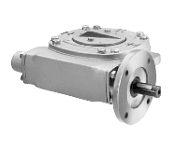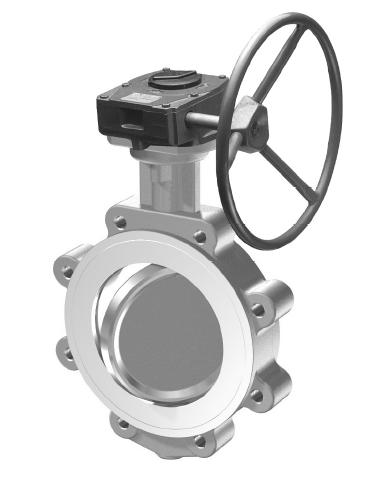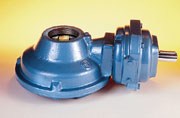 Manual actuation is done by a human driving force.
Manual actuation is done by a human driving force.
While the manual actuation can be made directly on the axis of the valve through a handwheel or other devices, manufacturers refer to manual actuator as incorporating a manual gearbox,
a mechanism that provides greater torque based on more turns.
In fact, it is normal to couple gearboxes in electric or pneumatic actuators to increase their features, or at least
supplement them with a manual driver in case of failure of the main source.
 Manual actuation is usually drove by handwheels. Valves whose access location makes difficult to operate on them can be drove by chain wheels.
For security, the driver can be out of the gearbox spigot. And then, only authorized operators who bring the handwheel or
wrench nut with them can operate the valve.
Manual actuation is usually drove by handwheels. Valves whose access location makes difficult to operate on them can be drove by chain wheels.
For security, the driver can be out of the gearbox spigot. And then, only authorized operators who bring the handwheel or
wrench nut with them can operate the valve.
Several norms indicate the maximum allowable effort applied on the manual driver by a person. The drive and gearbox as a whole must be dimensioned in accordance with compliance of these norms.
Some specifications indicate a maximum rim pull of 80 Lb (356 N) on handwheels and chain wheels, and a maximum input of 150 lb·in (17 N·m) on wrench nuts.
 Most of the valves require an operator torque that can only be achieve with a gearbox.
There are part turn and quart turn manual actuators.
Most of the valves require an operator torque that can only be achieve with a gearbox.
There are part turn and quart turn manual actuators.
Most of part turn gearboxes are quart turn or 90º stroke plus a tolerance. The most extended mechanism is worm gear type.
Butterfly and ball valves use this type of actuators.
Manual multiturn gearboxes have not limit of turn, so they need a stop-limiting device. Spur and cylinder gear are a common type of mechanism.
Globe and Gate valves require this type of actuators.
Standards or specifications can also indicate for a certain type of valve the minimum or maximum number of turns that the valve would need to be operated. See the below table.
Number of turns - Direct Burial Actuators
Butterfly valves |
| Size | Mimimum Turns | Maximum Turns |
| 16" | 30 | 60 |
| 20" | 40 | 80 |
| 24" | 40 | 80 |
Source: Standards and specifications for water main extensions and relocations.
Water Services Department, Kansas City, Missouri, Nov 2001
